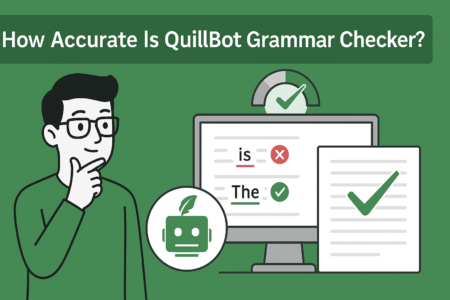Table of Contents
In the fast-paced digital era, marketing campaigns stand at the forefront of business success. They’re more than just promotional gimmicks – they represent the voice, personality, and aspirations of a brand. The most impactful marketing campaigns possess a unique blend of creativity, strategy, and data-driven insights, resonating deeply with their target audience, sparking conversations, and driving actions.
From the bustling billboards of Times Square to the personalized ad suggestions on social media platforms, the presence and influence of these campaigns are omnipresent. This article delves into the intricacies of creating powerful marketing campaigns, offering insights, strategies, and success stories that can guide brands and marketers toward accomplishing their goals.
Whether you’re a startup trying to make a mark or an established entity looking to reinvent, understanding the core principles of effective marketing campaigns is the foundation upon which to build your brand’s future successes.
Understanding the Fundamentals of Effective Marketing Campaigns
Navigating the vast landscape of marketing campaigns, one may ponder what differentiates a successful campaign from one that falls flat. It’s not just about catching the eye but about leaving a lasting impression, fostering trust, and ultimately driving action.
Truly effective marketing campaigns are an artful blend of strategy, creativity, and keen insights.
What defines a successful marketing campaign?
A successful marketing campaign goes beyond mere visibility. It strikes a chord with its audience, addressing their needs, aspirations, and emotions. It’s tailored not only to catch their attention but to linger in their minds.
Consistency is key; every touchpoint, whether it’s a digital ad, a TV spot, or an email, should deliver a unified message that embodies the brand’s core values and promise.
Engagement metrics such as click-through rates, conversion rates, and shares are essential quantitative measures. Yet, qualitative feedback – like customer testimonials, social media buzz, and word-of-mouth referrals – provides invaluable insights into the campaign’s resonance with its audience.
Furthermore, a successful marketing campaign often sets the foundation for a deeper relationship with customers. It’s not just about a one-off purchase but fostering loyalty, community, and brand advocacy. These campaigns create narratives, moments, and experiences that customers want to be part of, leading to lasting brand associations and sustainable business growth.
Role of research and planning in shaping campaigns
Research and planning serve as the bedrock for any marketing campaign. Venturing into the market without them is akin to setting sail without a compass. In the context of marketing campaigns, research helps unearth insights about the target audience: their behaviors, preferences, pain points, and aspirations. This data-driven knowledge ensures the campaign speaks their language and addresses their specific needs.
Market research can identify gaps in the market, emerging trends, and potential areas of differentiation. For instance, if a segment of the audience is underserved or if there’s a latent need not being met, the campaign can be designed to tap into this opportunity.
Planning, on the other hand, translates these insights into actionable strategies. It charts out the campaign’s objectives, the channels to be used, the messaging framework, the budget allocation, and the projected outcomes. A well-laid-out plan ensures that the campaign remains focused, agile, and goal-oriented. It also allows for periodic assessments, making room for iterations and pivots as the campaign progresses.
5 Proven Strategies to Power Your Marketing Campaigns
The world of marketing campaigns has evolved dramatically over the years, but certain strategies remain timeless in their effectiveness. Whether we’re talking about the vintage ads from the golden age of advertising or the sophisticated digital campaigns of today, some fundamental principles can catapult a campaign from good to extraordinary.
Here are a couple of strategies that have proven their mettle time and again in the arena of marketing campaigns.
1. Telling a Compelling Story: The narrative approach to marketing.
In a market saturated with brands clamoring for attention, what often sets the memorable marketing campaigns apart is their ability to tell a story. Storytelling isn’t just about crafting a tale; it’s about connecting with your audience on an emotional level, taking them on a journey that resonates with their own experiences and aspirations.
Humans are naturally wired to relate to stories. Since ancient times, tales have been the medium through which cultures, values, and lessons were passed down generations. In the context of marketing campaigns, a compelling narrative serves as a bridge between a brand’s values and its audience’s emotions.
When a brand shares its journey, challenges, triumphs, and values through a story, it creates a bond with its customers that transcends transactional interactions.
A great example of this narrative approach is how some brands use their origin stories. By sharing the challenges they faced, the reasons they began, and the values that guided them, they create a relatable and authentic image in the minds of their consumers.
Such a narrative approach makes a brand more than just a business; it becomes a character in its own tale, one that the audience can root for.
2. Leveraging Data Analytics: Making informed decisions.
While storytelling appeals to the heart, data analytics is what speaks to the mind in the realm of marketing campaigns. In this age of information, brands have access to vast amounts of data. From user behavior on websites to feedback on social media, every interaction offers valuable insights. However, the true power lies not in amassing this data, but in analyzing and deriving actionable strategies from it.
Data analytics provides a roadmap for brands. It helps in understanding what works and what doesn’t. For instance, if a particular marketing campaign garners significant traction among a specific demographic but not others, data analytics can unearth such patterns. This knowledge empowers brands to tailor their subsequent marketing campaigns, ensuring higher engagement and better ROI.
Furthermore, data analytics also offers predictive insights. By analyzing current trends, past behaviors, and market dynamics, brands can forecast future trends. Such foresight allows brands to stay ahead of the curve, preemptively addressing the needs and desires of their audience before they even articulate them.
3. Omni-Channel Engagement: Reaching customers where they are.
In today’s digital era, consumers are no longer confined to a single platform or medium. They bounce from social media to e-commerce sites, from emails to physical stores, seamlessly integrating the digital and physical realms. This changing behavior underscores the importance of omni-channel engagement in modern marketing campaigns.
Omni-channel engagement is not just about having a presence across multiple platforms; it’s about ensuring a cohesive and consistent customer experience across all these touchpoints. It recognizes that a consumer’s journey isn’t linear.
They might discover a brand on Instagram, research it on their website, read reviews on a third-party site, and then finally make a purchase in a physical store. Each of these interactions plays a critical role in influencing their purchasing decision.
For brands, this means understanding and mapping out these diverse customer journeys and ensuring that at every touchpoint, the brand’s messaging, values, and experience remain consistent and personalized. By offering a seamless transition between platforms, brands can cater to the customer’s convenience, boosting engagement and fostering loyalty.
4. User-Generated Content: Harnessing the power of community.
Nothing speaks louder about a brand’s credibility than the voices of its customers. In the realm of marketing campaigns, user-generated content (UGC) has emerged as a powerful tool to amplify these voices. UGC can range from customer reviews and testimonials to photos, videos, and other content shared by users on social platforms.
What makes UGC so impactful is its authenticity. When potential customers see real people, much like themselves, endorsing a product or sharing their experiences, it resonates deeply. It offers social proof, assuring them of the brand’s quality and reliability.
Furthermore, UGC also creates a sense of community around a brand. When customers share their experiences or stories, they’re not just endorsing a product; they’re becoming a part of the brand’s narrative. It fosters a sense of belonging, turning customers into brand ambassadors, advocates who spread the word far and wide.
For brands, leveraging UGC in their marketing campaigns involves encouraging and incentivizing customers to share their experiences, creating platforms where such content can be showcased, and integrating this content seamlessly into their broader marketing strategy.
5. Consistency and Branding: Building trust and recognition.
At the heart of any memorable marketing campaign lies a brand’s identity – its values, aesthetics, messaging, and promise. But to etch this identity into the minds of consumers, consistency is key.
Consistency in branding isn’t just about using the same logo or color scheme across platforms; it’s about ensuring that the brand’s core values and messaging remain unchanged, no matter where or how it’s presented.
A consistent brand image fosters recognition. When consumers encounter a brand multiple times and receive the same message and experience, it reinforces their memory and association with the brand. Over time, this recognition evolves into trust. Consumers begin to know what to expect from the brand, creating a sense of reliability.
Furthermore, consistency also amplifies the impact of a brand’s messaging. Repeated exposure to the same values, stories, and promises, delivered in diverse yet consistent ways, drives the brand’s narrative home, making it unforgettable.
Mistakes to Avoid in Your Marketing Campaigns
Every marketer dreams of launching the perfect marketing campaign—a campaign that resonates, engages, and drives actions. However, the path to marketing excellence is often riddled with pitfalls.
While every misstep offers a learning opportunity, being aware of some common mistakes can save time, resources, and potential damage to a brand’s reputation. Let’s delve into a few of these mistakes that can hinder the efficacy of your marketing campaigns.
Overlooking your target audience’s needs.
At the heart of every successful marketing campaign is a deep understanding of the target audience. When brands forget to prioritize their audience’s needs, desires, and pain points, they risk alienating the very people they aim to connect with.
For instance, launching a flashy, high-tech marketing campaign might seem enticing, but if it doesn’t address the core needs or interests of your audience, it will fall flat. Understanding the audience goes beyond demographic data.
It’s about empathizing with their lifestyle, challenges, aspirations, and values. Overlooking these crucial insights can result in campaigns that, while visually impressive, lack substance and relevance.
For brands, the key is to constantly stay in tune with their audience. Regular market research, customer interviews, and even casual interactions can offer invaluable insights, ensuring that every marketing campaign remains audience-centric.
Ignoring feedback and failing to iterate.
In the ever-evolving landscape of marketing campaigns, adaptability is a crucial trait. Brands that become too rigid in their approach, dismissing feedback or resisting change, often find their campaigns becoming obsolete.
Feedback, both positive and negative, is a goldmine of information. It offers a direct window into the audience’s perceptions, preferences, and areas of discontent. Ignoring this feedback is akin to navigating a ship without a compass. While initial reactions to criticism can be defensive, viewing feedback as a constructive tool can radically transform a brand’s marketing trajectory.
Moreover, the digital age has brought with it the blessing of real-time data. This means that brands no longer have to wait for a campaign to end to gauge its effectiveness. Regular monitoring can offer insights into areas that are working and those that need tweaking. Failing to iterate based on these insights can lead to lost opportunities and resources.
Inconsistency in messaging and brand voice.
A brand’s voice is its identity in the crowded marketplace. It’s what sets it apart and makes it recognizable. However, inconsistency in messaging and brand voice can muddle this identity, confusing and alienating potential customers.
Imagine encountering a brand on social media that’s casual and humorous, only to visit its website and find a starkly formal tone. Such inconsistencies create cognitive dissonance, making it hard for consumers to understand and trust the brand.
Consistency, on the other hand, reinforces brand values, messaging, and promise, creating a sense of reliability.
Brands must ensure that while the medium of communication might change, the core messaging and brand voice remain consistent. This not only fosters recognition but also deepens trust and loyalty among consumers.
Neglecting the Power of Visual Content
In today’s fast-paced digital age, consumers often make split-second decisions based on visual appeal. Visual content, be it images, videos, infographics, or animations, plays a pivotal role in capturing attention and conveying complex information succinctly.
Brands that neglect this aspect, relying solely on text-heavy content, risk losing their audience’s attention.
The key lies in understanding the adage: “A picture is worth a thousand words.” Well-designed visual content not only attracts but also helps in retaining information. It evokes emotions, tells stories, and often simplifies intricate concepts.
For brands, this means investing in quality visuals that resonate with their messaging and appeal to their target audience.
Setting Unrealistic Expectations
Every marketing campaign carries with it certain goals and expectations. However, setting the bar unrealistically high can lead to disappointment, demotivation, and even rash decisions. It’s essential to set achievable targets based on market research, past performance, and industry benchmarks.
Furthermore, while ambition is commendable, it’s crucial to ensure that the resources (time, money, manpower) align with these goals. Overpromising and underdelivering can not only demoralize the team but can also erode trust among stakeholders and customers.
Overlooking Mobile Users
Given the ubiquity of smartphones and the increasing amount of time people spend on them, mobile optimization is no longer just an option; it’s a necessity. Brands that fail to optimize their marketing campaigns for mobile users are missing out on a significant chunk of their audience.
This means ensuring that websites are mobile-responsive, ads are optimized for smaller screens, and content is easily consumable on the go. Ignoring mobile optimization can result in frustrated users, decreased engagement, and a significant loss in potential conversions.
Over-relying on Paid Advertising
While paid advertising, like PPC campaigns and sponsored posts, can amplify reach and drive quick results, over-relying on them at the expense of organic strategies can be detrimental in the long run. Organic reach, achieved through SEO, content marketing, and organic social media engagement, often brings in more engaged and loyal audiences.
Exclusively focusing on paid strategies can also inflate marketing budgets without ensuring long-term engagement or loyalty. It’s crucial for brands to strike a balance, using paid advertising to supplement, not replace, organic growth strategies.
Ignoring the Competition
While it’s vital for brands to carve their niche and stay true to their identity, completely ignoring the competition can lead to missed opportunities and potential threats. Regularly analyzing competitors’ strategies can offer insights into market trends, emerging technologies, and potential gaps in one’s own approach.
This doesn’t mean copying competitors, but rather understanding the landscape, learning from others’ successes and mistakes, and continuously refining one’s own strategies to stay ahead.
The Future of Marketing Campaigns: Emerging Trends and Innovations
In a world that is continually evolving, staying ahead of the curve is imperative for brands aiming to stand out and engage their audience effectively. As we look ahead, several emerging trends and innovations are set to reshape the landscape of marketing campaigns.
Understanding and adapting to these shifts can provide brands with a competitive edge, ensuring their campaigns remain relevant, resonant, and impactful.
Rise of Conversational Marketing
The traditional monologue form of marketing, where brands broadcast their message, is giving way to a more interactive dialogue approach. Conversational marketing leverages real-time conversations, often facilitated through chatbots, messaging apps, or AI-driven tools, to engage with customers instantly.
This approach is more personalized, allowing brands to address individual queries, concerns, or needs, leading to deeper engagement and improved customer satisfaction.
Adopting conversational marketing means being available for your audience around the clock, offering immediate responses, and personalizing interactions based on user behavior and preferences. Brands that embrace this approach will foster stronger relationships and drive higher conversions.
Augmented Reality (AR) and Virtual Reality (VR) in Marketing
The lines between the digital and physical realms continue to blur with the integration of AR and VR into marketing strategies. These immersive technologies offer consumers unique, engaging experiences, transporting them to virtual worlds or augmenting their current reality with digital overlays.
For instance, AR can allow consumers to virtually try products before purchasing, while VR can take them on immersive journeys, like virtual tours of holiday destinations or behind-the-scenes looks at product creation. Brands that harness the power of AR and VR can offer enriched experiences, setting themselves apart in a crowded marketplace.
Sustainability and Ethical Marketing
Modern consumers are increasingly discerning, seeking out brands that align with their values and take a stand on socio-environmental issues. Sustainability, ethical sourcing, and social responsibility are no longer just buzzwords; they’re vital components of brand identity and marketing campaigns.
Brands need to adopt a genuine commitment to these values, going beyond mere lip service. This involves integrating sustainable practices, transparently communicating these initiatives, and ensuring that marketing campaigns genuinely reflect the brand’s commitment to making a positive impact.
Personalization at Scale
With the advent of big data and advanced analytics, brands have the tools to offer hyper-personalized experiences to their customers. Personalization at scale means tailoring marketing messages, offers, and interactions based on individual user behavior, preferences, and history, but on a massive scale.
This level of personalization enhances user experience, making them feel seen and valued, leading to increased loyalty and engagement. To achieve this, brands must invest in robust data collection and analysis tools, ensuring they’re equipped to deliver personalized content effectively and ethically.
Voice Search and Voice-Activated Interactions
As smart speakers and voice-activated assistants become household staples, voice search and interactions are gaining prominence. Brands need to optimize their content and marketing campaigns for voice search, understanding the nuances of spoken queries and the intent behind them.
Moreover, the rise of voice-activated shopping presents a new frontier for marketers. Ensuring that brand information is easily accessible and optimized for voice can result in increased visibility and conversions in this emerging channel.






